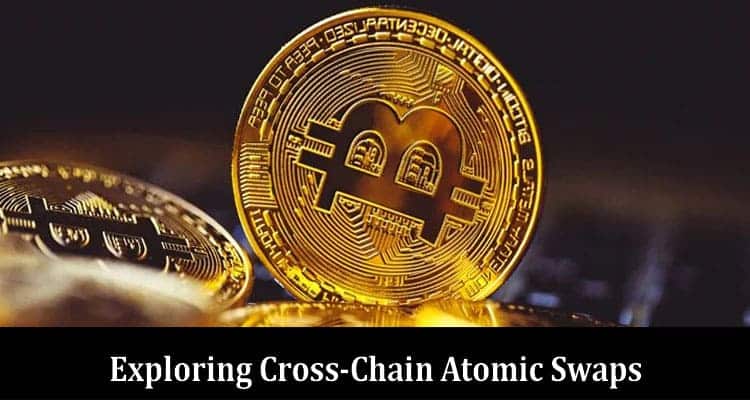Cross-Chain Atomic Swaps are a revolutionary concept in the world of cryptocurrency, enabling trustless and secure exchanges between different blockchain networks. In this article, we will explore the mechanics of Cross-Chain Atomic Swaps and take a closer look at JellySwap, a platform making significant strides in this arena. As you navigate the world of digital currencies, it’s important to choose a reliable exchange like Immediate Growth App that provides comprehensive market analysis and secure trading options.
How Cross-Chain Atomic Swaps Work
The Fundamentals of Atomic Swaps
Cross-Chain Atomic Swaps build upon the foundation of traditional Atomic Swaps, which rely on Hash Time-Locked Contracts (HTLCs) and smart contracts. HTLCs ensure that a transfer of assets between two parties only occurs if certain conditions are met within a specified time frame, making the swap process secure and trustless.
Cross-Chain Atomic Swaps in Detail
- Locking and Unlocking Mechanisms
To initiate a Cross-Chain Atomic Swap, participants from different blockchains lock their assets into smart contracts. These assets are held in escrow until both parties confirm the successful completion of the swap.
- Security Considerations
Cross-Chain Atomic Swaps are designed with security in mind. If any party attempts to cheat or does not fulfill their end of the deal, the swap will be canceled, ensuring the safety of participants’ funds.
- Trustlessness and Decentralization
The beauty of Cross-Chain Atomic Swaps lies in their trustlessness and decentralization. There is no need for intermediaries or third-party custodians, reducing counterparty risk significantly.
Bitcoin: The Leading Cryptocurrency
Brief History of Bitcoin
Bitcoin, created by the pseudonymous Satoshi Nakamoto in 2009, was the world’s first cryptocurrency. It laid the foundation for the blockchain revolution, ushering in a new era of digital currencies.
Bitcoin’s Role in the Crypto Ecosystem
Bitcoin remains the dominant force in the cryptocurrency space, often referred to as digital gold. Its widespread adoption and recognition make it a preferred choice for many investors and traders.
Challenges of Cross-Chain Swapping with Bitcoin
Despite its prominence, Bitcoin operates on its blockchain with unique technical specifications. This presents challenges when it comes to executing Cross-Chain Atomic Swaps with other cryptocurrencies. Compatibility issues and slower transaction times are among the obstacles that need to be overcome.
Introducing JellySwap
What Is JellySwap?
JellySwap is a decentralized cryptocurrency exchange built to facilitate Cross-Chain Atomic Swaps. It serves as a bridge connecting various blockchain networks, allowing users to seamlessly exchange assets across different chains.
JellySwap’s Vision and Mission
JellySwap aims to empower users by providing a trustless, secure, and user-friendly platform for cross-chain trading. Its mission is to simplify the complexities of cryptocurrency trading while preserving the core principles of decentralization.
How JellySwap Enhances Cross-Chain Atomic Swaps
- Supported Blockchains and Tokens
JellySwap supports an expanding list of blockchains and tokens, making it a versatile solution for users looking to diversify their crypto portfolios.
- User-Friendly Interface
The platform’s intuitive interface ensures that both beginners and experienced traders can easily navigate and execute Cross-Chain Atomic Swaps.
- Liquidity Pools and Network Effects
JellySwap leverages liquidity pools, promoting network effects that enhance its functionality and liquidity, ultimately providing better trading opportunities for users.
Benefits of Cross-Chain Atomic Swaps with JellySwap
Eliminating Intermediaries
By eliminating the need for centralized exchanges or third-party intermediaries, JellySwap puts users in control of their assets and eliminates counterparty risk.
Reducing Counterparty Risk
Smart contracts and HTLCs ensure that assets are only released when the swap conditions are met, significantly reducing the risk of fraud or default.
Enhancing Privacy and Anonymity
JellySwap’s decentralized nature enhances user privacy, as users are not required to provide personal information or undergo lengthy verification processes.
Lowering Transaction Costs
The absence of intermediaries and the efficient execution of Cross-Chain Atomic Swaps contribute to lower transaction costs compared to traditional exchanges.
Use Cases and Applications
Decentralized Finance (DeFi)
Cross-Chain Atomic Swaps play a crucial role in the DeFi ecosystem, allowing users to access a wide range of assets and liquidity pools across different blockchains without relying on centralized exchanges.
Cross-Border Transactions
JellySwap’s cross-chain capabilities can revolutionize cross-border transactions, enabling individuals and businesses to transfer assets across borders with ease, speed, and reduced fees.
Trustless Trading on Decentralized Exchanges (DEXs)
Integrating Cross-Chain Atomic Swaps with DEXs can lead to trustless and seamless trading experiences, further enhancing the DeFi landscape.
Challenges and Future Developments
Scalability Concerns
As the popularity of Cross-Chain Atomic Swaps grows, scalability remains a pressing concern. Optimizing blockchain networks and developing Layer 2 solutions will be crucial.
Regulatory Hurdles
Navigating regulatory frameworks worldwide poses challenges for platforms like JellySwap. Compliance measures and collaboration with regulatory bodies will be necessary.
The Ongoing Evolution of Cross-Chain Solutions
The cryptocurrency space is continually evolving, and innovations like Layer 2 solutions and cross-chain bridges will shape the future of Cross-Chain Atomic Swaps.
Conclusion
In summary, Cross-Chain Atomic Swaps are a game-changer in the world of cryptocurrency, offering secure, trustless, and cost-effective trading across different blockchain networks. JellySwap, with its user-friendly approach and extensive blockchain support, is poised to play a pivotal role in shaping the future of cryptocurrency trading.


